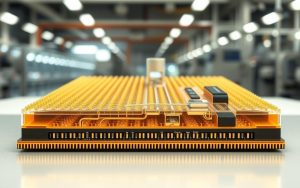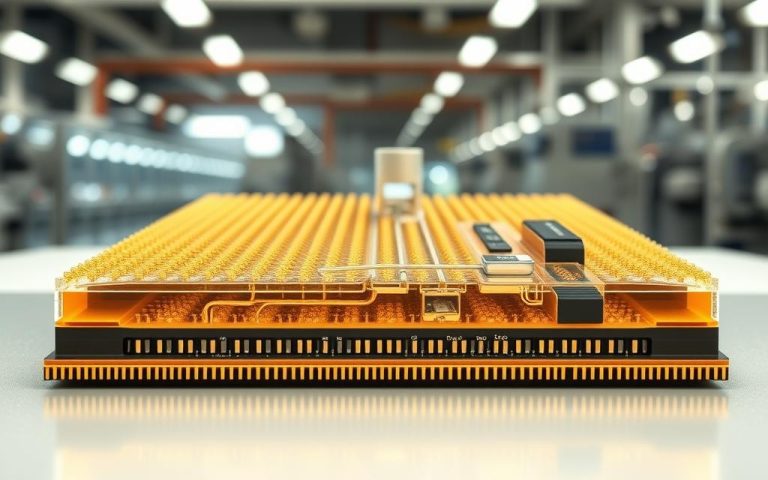OEM in Technology: What It Means & Why It Matters
Original equipment manufacturers (OEMs) are vital in the tech industry. They create crucial components that power our digital world. Understanding their role helps us grasp how modern tech products come to life.
OEM software and parts are key to many devices we use daily. These include laptops, smartphones, and complex enterprise systems. Intel and Microsoft are prime examples of OEMs.
The tech industry thrives on OEM partnerships. They drive innovation and boost efficiency. Companies can focus on their strengths by outsourcing to specialised makers.
This teamwork speeds up product development and cuts costs. It also ensures high-quality, reliable products reach consumers quickly. The result is rapid technological progress.
OEMs are the unsung heroes of our digital age. They provide the building blocks for global brands. From embedded analytics to precision-engineered parts, OEMs bring cutting-edge tech to life1.
What is OEM in Technology?
Original Equipment Manufacturers (OEMs) are vital in the technology world. They create specialised parts for businesses globally. These components form the backbone of modern tech infrastructure2.
Tech OEMs focus on business-to-business (B2B) sales. They develop sophisticated components for specific tech needs across industries2.
Understanding Original Equipment Manufacturers
OEMs do more than just manufacture. They create intricate component configurations tailored to precise business needs. Their approach is specialised and industry-specific.
- Designing specialised technological solutions
- Producing components with strict manufacturing specifications2
- Developing products for specific industrial applications
The Role of OEMs in Modern Technology
Major tech OEMs like Dell EMC, HPE, and Lenovo have changed product development. They source parts from various suppliers. This creates complex networks of technological innovation3.
Key Components and Applications
| OEM Sector | Key Components | Primary Applications |
|---|---|---|
| Computer Hardware | Processors, Motherboards | Enterprise Computing |
| Telecommunications | Network Equipment | Communication Infrastructure |
| Software | Operating Systems | Device Pre-installation2 |
The OEM technology landscape keeps changing. Companies are blurring lines between manufacturers and resellers3.
The Relationship Between OEMs and Value-Added Resellers

Original Equipment Manufacturers (OEMs) and Value-Added Resellers (VARs) form a vital partnership in technology distribution. This ecosystem is crucial in delivering sophisticated technological solutions. Each entity plays a unique role in this process.
OEMs create essential components for complex tech products4. VARs then turn these components into complete solutions for end-users. This teamwork allows each partner to focus on their strengths.
- VARs incorporate OEM components into final consumer products
- Partnerships enable specialisation and efficiency
- Shared resources help reduce overall production costs5
The OEM-VAR alliance goes beyond product assembly. Collaborative partnerships help smaller companies compete with larger market players5. Microsoft’s partner ecosystem was valued at nine times its direct sales5.
In technology distribution, the whole becomes greater than the sum of its parts.
These partnerships ensure compliance with industry rules and reduce oversight risks5. This approach leads to innovative tech development. The result benefits both businesses and consumers6.
Benefits of Using OEM Technology Products
OEM technology products offer significant advantages to businesses across various industries. These components provide superior performance and long-term value in technological solutions7.
OEM partnerships can lead to substantial cost savings for companies. They also bring about operational improvements through carefully selected collaborations8.
Quality Assurance and Reliability
OEM product development prioritises technology quality assurance. Manufacturers invest heavily in creating components that meet strict standards9.
Advanced technologies like predictive maintenance help reduce equipment failures9.
- Comprehensive testing protocols
- Precision engineering
- Consistent performance standards
Warranty and Support Services
OEM support services offer businesses comprehensive protection and assistance. Lifecycle management ensures optimal returns on investment7.
Manufacturers like Zebra Technologies provide robust support throughout a product’s entire lifecycle7.
Cost-Effectiveness in the Long Term
Strategic OEM partnerships can reduce development costs by up to 30%8. Customised technology solutions can potentially increase return on investment by 15-20%8.
| OEM Benefit | Potential Impact |
|---|---|
| Development Cost Reduction | Up to 30% |
| Production Time Efficiency | 25% Reduction |
| ROI Improvement | 15-20% Increase |
“OEM technology transforms operational capabilities by providing innovative, cost-effective solutions tailored to specific business needs.”
The global OEM market is expanding rapidly. It’s projected to grow at a 5.6% compound annual rate from 2023 to 20308.
This growth highlights the increasing importance of OEM technology across various industries.
OEM vs Aftermarket Solutions in Tech Industry
Tech firms grapple with choosing between OEM and aftermarket solutions. OEM parts are original manufacturer components. Aftermarket options offer cost-effective replacements10.
Businesses must weigh quality, price, and long-term performance. These factors are crucial in making the right choice.
- OEM parts guarantee precise compatibility and superior quality10
- Aftermarket solutions typically provide lower-cost alternatives10
- Warranty coverage differs substantially between OEM and aftermarket options
Cost is a major factor for many organisations. Nearly two-thirds of customers consider pricing when choosing tech components11.
Younger customers often explore options beyond traditional OEM channels11. This trend is shaping the market landscape.
Performance metrics show key differences. OEM makers invest heavily in research, ensuring high-precision parts10.
Aftermarket parts may compromise reliability. This could potentially increase maintenance costs10.
Strategic selection between OEM and aftermarket solutions requires comprehensive analysis of technological requirements and budgetary constraints.
Digital transformation is changing procurement strategies. Online parts sales could double soon, expanding aftermarket opportunities11.
Tech companies must adapt to these new market dynamics. The industry landscape is evolving rapidly.
Conclusion
OEMs are vital in modern technology. They drive innovation across industries, from automotive to electronics12. OEMs adapt to market demands and technological advancements13.
OEMs and value-added resellers work together to ensure high-quality products. This partnership optimises production processes12. Companies like Apple, Foxconn, and Samsung show how OEM partnerships can revolutionise tech innovation13.
The future of OEMs will focus on sustainability and customisation. They’ll use cutting-edge tech to meet complex consumer needs13. OEMs will keep reducing costs and improving product quality14.
OEMs’ success depends on adapting to global challenges. They must integrate new technologies to thrive in the competitive tech world13.
FAQ
What does OEM stand for in technology?
How do OEMs differ from aftermarket products?
Why do businesses prefer working with OEM technology suppliers?
What types of components do OEMs typically produce?
How do OEMs interact with Value-Added Resellers (VARs)?
Are OEM products more expensive than aftermarket alternatives?
What industries rely most heavily on OEM technology?
How do OEMs ensure product quality?
Can businesses customise OEM technology solutions?
What future trends are emerging in OEM technology manufacturing?
Source Links
- https://www.revealbi.io/glossary/oem-software
- https://www.investopedia.com/terms/o/oem.asp
- https://www.techtarget.com/searchitchannel/definition/OEM
- https://www.investopedia.com/ask/answers/041515/what-original-equipment-manufacturer-oem-automotive-sector.asp
- https://www.gilson.com/default/learninghub/post/value-added-partnership-vs-oem-what-s-the-difference.html?srsltid=AfmBOooZpErORL8Z1-zLSG_aT1eWlCjl2_RLmoZEoGKJqlOrRwqFv4rj
- https://www.americanexpress.com/en-gb/business/trends-and-insights/articles/oem-meaning/
- https://www.zebra.com/us/en/resource-library/faq/what-does-oem-mean.html
- https://neweraelectronics.com/blog_posts/what-are-the-benefits-of-using-oem-technology/
- https://www.mpofcinci.com/blog/what-is-oem/
- https://www.advancedtech.com/blog/oem-original-equipment-manufacturer/
- https://www.mckinsey.com/industries/automotive-and-assembly/our-insights/for-oems-in-the-united-states-the-aftermarket-is-fertile-ground
- https://toolsense.io/glossary/oem/
- https://www.peakframeworks.com/post/original-equipment-manufacturers
- https://www.accio.com/blog/understanding-original-equipment-manufacturer-oem-a-comprehensive-guide








